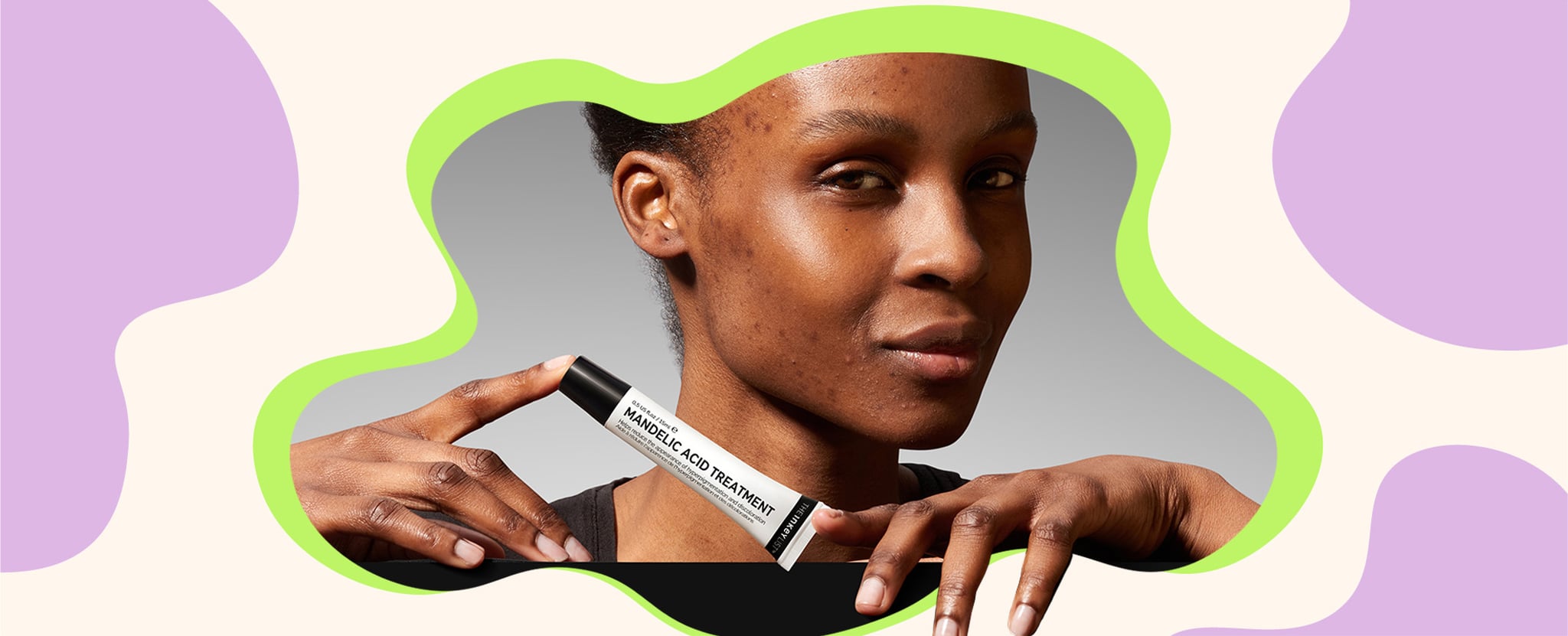
Inkey List Acne Ingredients, Succinic Acid
5 Acne Ingredients You Should Definitely Know About Before Tackling a Blemish

The skin-care community would be nothing without its buzzy ingredients. But even skin-care savants will tell you that it's hard to keep up with all of the new and old — popular and underrated — names that continue to surface online. Allow us to help you cut through the noise.
A lot of ingredients are multifunctional — they target more than just one skin-care concern at a time. But what if you have one really big concern and it's fussy, inflamed, and too loud to ignore? If you've got acne on the mind, we're sharing the ingredients you should definitely know about before taking on a blemish, from newcomer succinic acid to the long-beloved salicylic acid. Ahead, get everything you need to know about these acne-friendly ingredients and the products you can find them in.
Hear that? Clear skin never sounded so quiet.

As far as alpha hydroxy acids go, the two we’re most familiar with are glycolic and lactic acid. But, as of late, their younger, more gentle sister, mandelic acid, is coming into her own. Like all AHAs, mandelic acid exfoliates skin and helps to increase the shedding of dead skin cells, which can be helpful for anyone dealing with hyperpigmentation or uneven skin texture. Mandelic acid is beneficial for a number of skin-care concerns, including wrinkles and fine lines, but it’s been praised as a powerful acne fighter. Thanks to its unique molecular weight (it’s larger than most AHAs), mandelic acid penetrates skin slowly, so it’s less likely to cause irritation. The result: fast cell turnover and, hopefully, fewer breakouts.
AHAs, in general, can sensitise skin, so using mandelic acid at night is usually recommended. A p.m. treatment, like The INKEY List Mandelic Acid Treatment, utilises retinol and glycerin alongside mandelic acid to help reduce and fade spots caused by breakouts while keeping skin hydrated all night long.

Who doesn't love a multitasker? Succinic acid is that rare up-and-coming ingredient that, as far as we know now, kind of does it all. Naturally found in amber and sugarcane, succinic acid offers the kind of antimicrobial and anti-inflammatory properties that are ideal for someone struggling with acne that just won't quit. It also offers antioxidant protection, can assist in balancing sebum production, and can help to soften and condition skin. In other words, it won't leave your skin in worse shape than you started with just to bust a breakout.
Because succinic acid is known for its non-irritating non-drying nature, it pairs well with hyaluronic acid. The INKEY List Succinic Acid Blemish Treatment uses these ingredients alongside sulphur powder and salicylic acid to target inflamed breakouts — fast. Spot treatments always felt like a necessary evil, but succinic acid might be changing how we see the product category forever.

There's a reason salicylic acid has been around for ages; it's a professional acne fighter. Salicylic acid is a beta hydroxy acid (BHA) derived from willow bark that's oil soluble, so it can really go deep inside pores to unclog them, thus preventing and treating breakouts. Although the ingredient works well against swollen, inflamed blemishes, it's also helpful with treating blackheads and whiteheads because it expertly breaks down oil build-up without drying out skin.
Simply put, salicylic acid targets acne quickly, which is why it's often found in so many acne skin-care products, whether they're cleansers or spot treatments. The INKEY List Salicylic Acid Cleanser, for example, uses the popular ingredient to exfoliate skin while you cleanse, so you're left with a clean canvas for the rest of your topical products.

So many acne-related products are too harsh for most skin types. Oftentimes, you have to sacrifice a relatively healthy complexion just to rid your chin of a breakout. Doesn’t seem fair, right? Allantoin is the under-the-radar ingredient here to help. It may not be the ingredient you rely on to unclog pores or exfoliate away an acne scar, but it is the ingredient you want alongside some of the industry's most powerful acne-fighting acids. Allantoin is known for its soothing and healing properties, which come in handy while treating a breakout. Although there is still research to be done on the ingredient, we do know that it's one you want by your side if you're looking to soothe, moisturise, and hydrate your skin.
Allantoin isn't the most accessible ingredient, but it can be found in some routine staples, like The INKEY List Salicylic Acid Cleanser. Used alongside zinc and a two percent concentration of salicylic acid, allantoin offers soothing results to what could be an otherwise irritating combination of ingredients. Even your skin-care products need checks and balances.

Niacinamide is the most talked-about ingredient in the game — but why? Once upon a time, it was a standard practice to be relatively aggressive with your skin; back then, we had no idea how important it was to maintain balance. We also didn't know that gentle ingredients, like niacinamide, could be just as effective as its more intense counterparts. Niacinamide is a water-soluble ingredient, which means that it's easily absorbed into the skin and tends to work well with other topical ingredients. In addition to improving uneven skin tone, reducing the appearance of enlarged pores, and strengthening a weakened skin barrier, niacinamide is also known for its anti-inflammatory properties, so it's often found in acne treatments and serums.
The INKEY List Niacinamide Serum uses niacinamide in tandem with hyaluronic acid to help reduce excess oil and redness in the skin, including any inflammation due to breakouts. The fast-absorbing serum works quickly to target clogged pores and blemishes; plus, it's gentle enough to use morning and night.